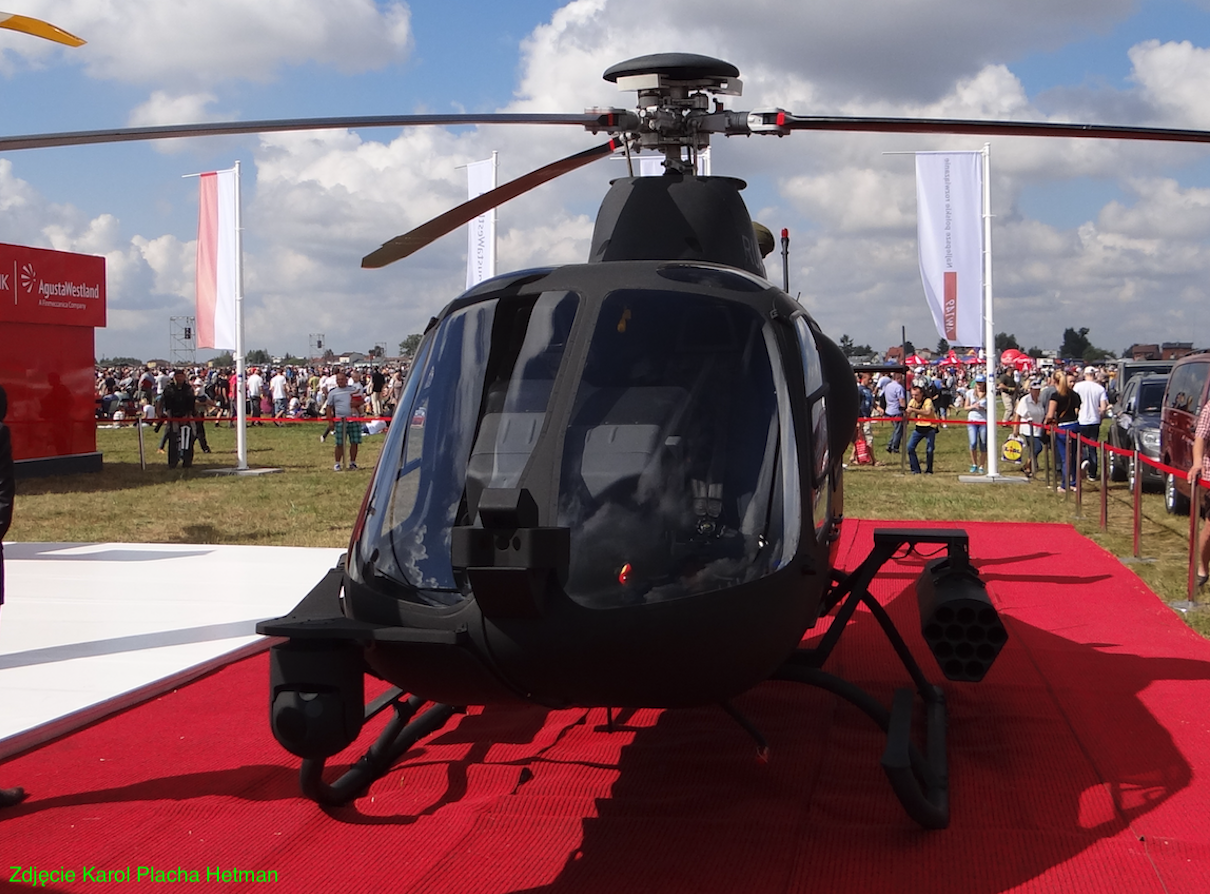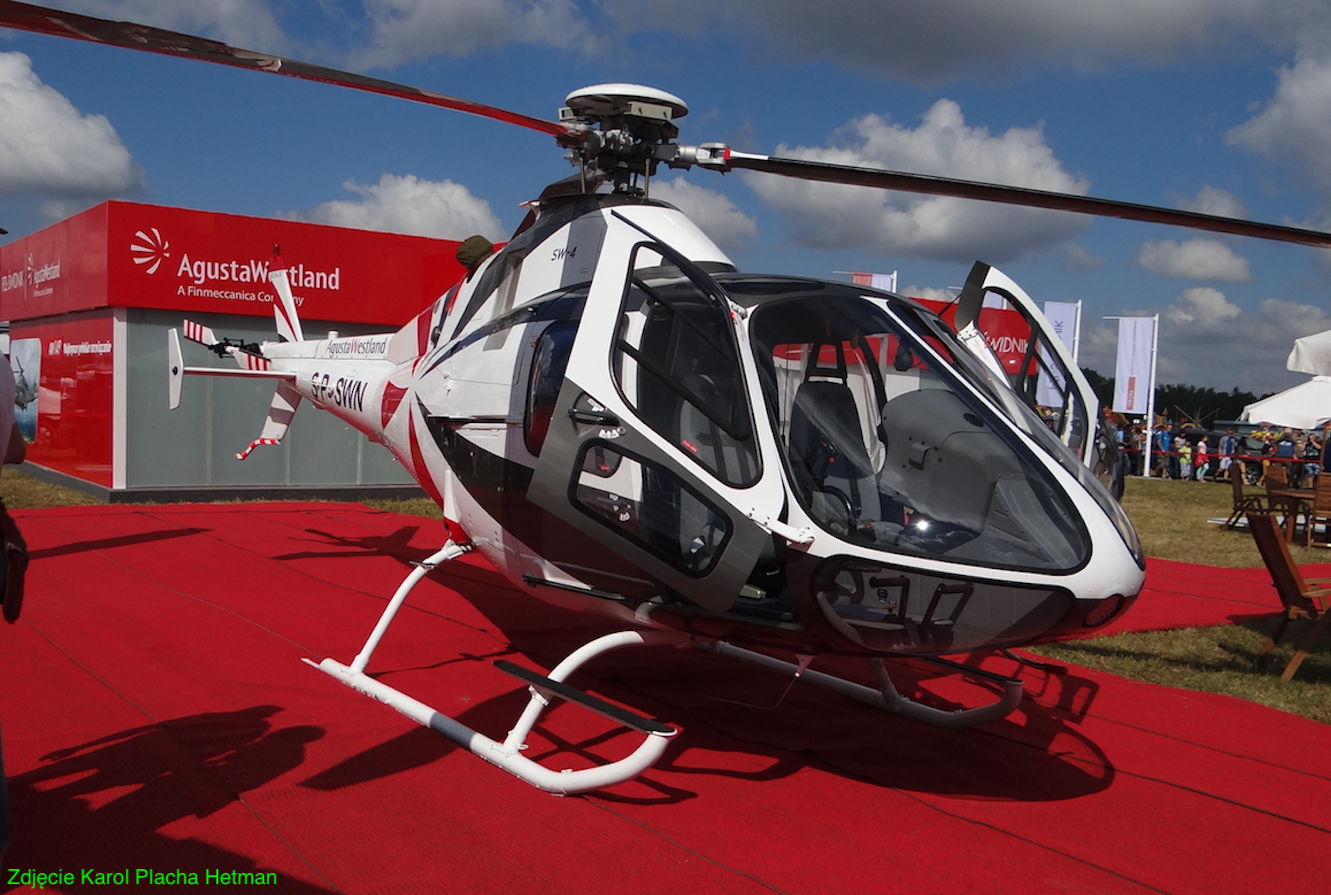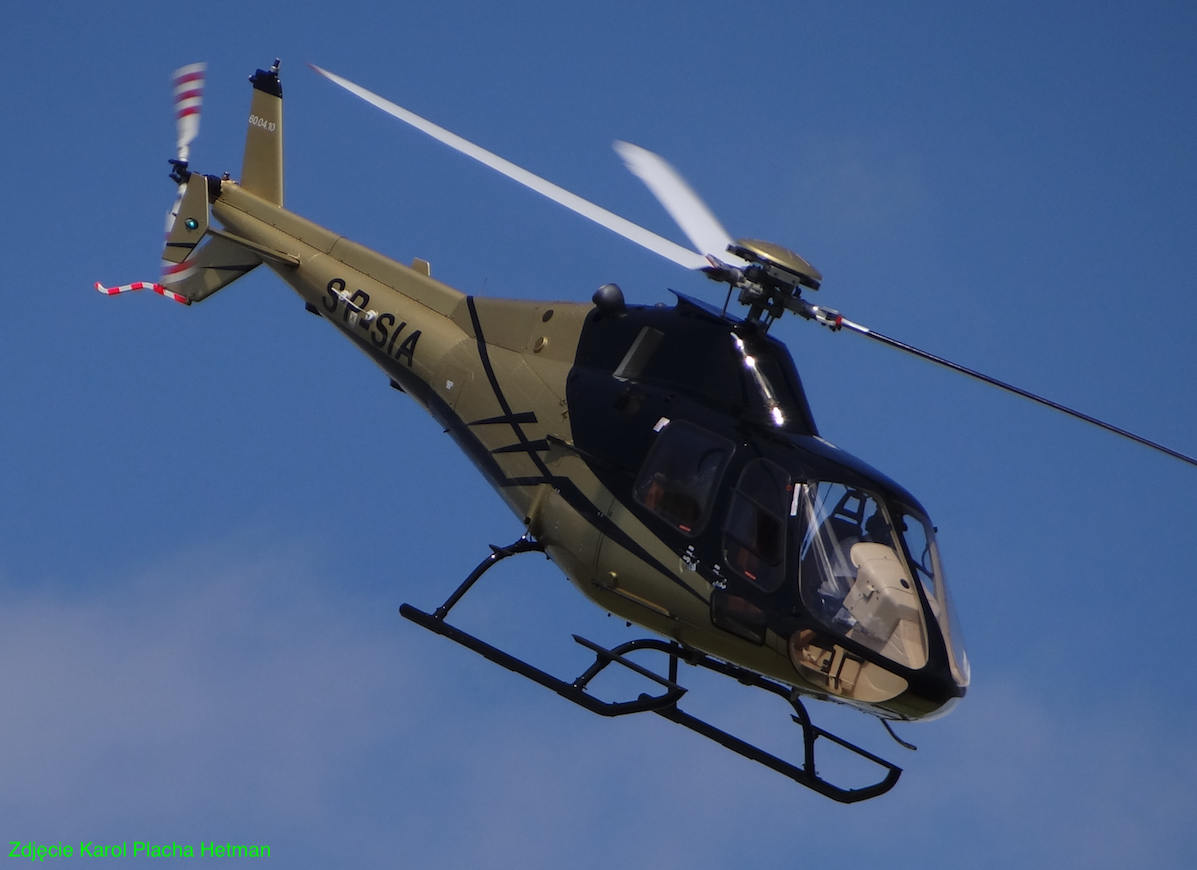Warszawa 2018-05-12
PZL Świdnik SW-4 Puszczyk.
290b Section 26.10.1996 year.
Further development of the structure.
SW-4 RUAS/OPH.
The version marked RUAS/OPH means exactly: RUAS – Rotorcraft Unmanned Air System; OPH – Optionally Piloted Helicopter.After the takeover of PZL Świdnik by AgustaWestland in 2010, work began on the construction of an unmanned version of the SW-4. The demonstrator was presented for the first time at MSPO 2012 and MSPO 2013 in Kielce. The unmanned variant has been designated SW-4 RUAS/OPH and is equipped with a remote control system, thanks to which the helicopter can be used for environmental monitoring, examination of contaminated areas and assessment of the effects of natural disasters. In addition, the automatic system can be completely disconnected from the machine control system and the helicopter is then piloted by the pilot on board. An unmanned variant developed jointly by PZL Świdnik and the Italian-British concern AgustaWestland based on the basic version of the SW-4 helicopter used by the Polish Air Force. PZL SW-4 Solo RUAS/OPH as an optionally physically piloted machine significantly increases the flexibility of applications. It can be used, among others, for such activities as: transport of personnel, reconnaissance, intelligence and surveillance, transfer of supplies, armaments, observation systems or communications.
The SW-4 RUAS/OPH helicopter was presented in the UK, where it underwent tests of simulated, automatic landing on the ship. The "ship" was a platform pulled by a truck tractor. The tests and presentation went very well. The program was implemented for the Royal Navy. As part of the program, 27 hours of demonstration flights and 22 simulations of automatic landing on board the ship were carried out using the SW-4 RUAS Solo helicopter. The flight tests carried out under the contract took place at the airport in Llanbedr.
SW-4 Solo.
On December 15, 2016, tests began on the new version of the SW-4 helicopter, which was designated SW-4 Solo. It is a variant of both unmanned and manned helicopters. The tests were aimed at checking the functioning of the helicopter in extreme flight conditions. According to a press release from the Leonardo-Finmeccanica defense and aviation concern, a series of tests of the SW-4 Solo unmanned helicopter was conducted in cooperation with DTA (Distretto Tecnologico Aerospaziale Pugliese) and the Italian Civil Aviation Authority (ENAC, Ente Nazionale Aviazione Civile) for the first few months 2017 – among the main objectives of the tests was to check the procedures and regulations for the use of this type of machinery. The tests conducted were aimed at checking the helicopter’s suitability for service in Italy.
SW-4 variants.
Passenger variant adapted to carry a pilot and four passengers.
Passenger and freight variant, the so-called station wagon. It takes a maximum of a pilot and 450 kg of cargo or four passengers on board. The cargo is also placed in the trunk. Passenger seats are easily removable and are less comfortable than in the passenger version.
A fire-fighting variant with a SEI Bambi 1012 tank, with a capacity of 455 liters and a curb weight of 39 kg, which hangs under the hull. However, the value of such a firefighting machine is symbolic and can only support the basic firefighting measures.
School variant with double tillers.
Medical variant with one patient on a stretcher, a pilot and a paramedic. On board there will be medical equipment, an oxygen cylinder with accessories, a defibrillator, a non-slip and dirt-resistant floor, an internal and external communication system, and a winch with a lifting capacity of 150 kg.
Police variant with appropriate equipment (infrared camera, night vision, classic camera, communication system, winch, etc.).
The military variant for the Polish Air Force is the PZL SW-4 Puszczyk.
China.
One thing is for sure; On December 30, 2008, the PZL SW-4 helicopter received a certificate issued by the Chinese civil aviation supervision. The rest is a world of guesses and assumptions. In 2007, PZL Świdnik signed an agreement with China for the assembly of helicopters at the newly built plant of Tianyi Helicopter Xinjiang Airlines Company in the special development zone of Jiangxi Province. It assumed the assembly of 150 PZL SW-4 Puszczyk, PZL W-3 Sokół and PZL Kania helicopters in the period 2007-2014. On February 25, 2010, Chinese sources reported that the first Chinese-assembled SW-4 helicopter flew at Nanchang Changbei International Airport. According to their sources, the assembly took place at the Czerwony Orzeł Aviation Production Plant in Jiujiang from elements delivered from Poland. However, PZL Świdnik did not confirm the information that PZL SW-4 helicopters are assembled in China. It is possible that the contract was broken by the Chinese side and China started production without a license copy of the SW-4 helicopter, which happened many times in this country, not to write that it was the norm.
In 2016, a batch of 10 SW-4 machines was sold to China.
SW-4 / AW.009.
In March 2016, during the Heli Expo in Louisville, Kentucky, USA, Finmeccanica Helicopter Division demonstrated a civilian development version of the SW-4 helicopter under the new designation AW.009. According to advertising materials, the new helicopter provides a better level of comfort during the flight, lower maintenance and operating costs. The main rotor uses a more effective vibration damping system. The new version also features a new integrated avionics system with a Genesys avionics multifunction display installed.
Depending on the customer’s wishes, the SW-4 helicopter can be equipped with inflatable rescue floats and a guillotine above the cabin for cutting overhead wires in an emergency.
In the future, the option to install a more powerful engine will also be offered. The manufacturer has signed a cooperation agreement with AAL USA of Huntsville, Alabama on avionics integration and FAA certification, expected by the end of 2016.
The AW.009 helicopter is dedicated to the implementation of training missions in the field of maintaining public order and safety, medical rescue and passenger transport. Finmeccanica Helicopter Division has received a letter of intent expressing initial interest in the helicopter from the Riverside, California Police Department.
Finmeccanica Helicopter, and now Leonardo, intends to equip the SW-4 helicopter with a new, more efficient and lighter main rotor.
Exploitation.
The commercial results of SW-4 sales are not large. It was impossible to talk about conquering the world market. However, the machine is already well recognized in the world and has a lot of positive arguments behind it. The SW-4 comes from a factory that has built around 7,000 helicopters in sixty years. It has a Western engine and avionics. It has all the most important certificates in the world. It was tested in the USA, Italy, UK, South Korea, Brazil and Moscow state. The helicopter is operated in the country of the manufacturer, which is very important.
SW-4 helicopters in civilian versions are operated in Poland, China, South Korea, Ukraine, Brazil and Italy. By 2015, 16 helicopters in civilian versions were exported. In 2016, a batch of 10 SW-4 machines was sold to China.
Low maintenance and operation costs of the helicopter as well as simple operation have made the SW-4 one of the most popular privately used helicopters. The price of the basic version is from 750 thousand. up to 1 million zloty.
According to available information, SW-4 helicopters suffered six accidents until 2018. Importantly, no one was killed and the injured had only minor injuries. One accident occurred in the USA at Fairbanks Airport in Alaska. On January 15, 2012, it crashed during tests in low temperatures (-38 degrees), registration no. SP-SSW, serial no. 04/60/01. The second accident was in South Korea. On February 6, 2012, there was a very hard landing. Reg. No. HL9403 Serial No. 03/60/21. Third accident in China on June 16, 2013. The helicopter was reportedly assembled in China.
In Poland, three accidents happened in Dęblin. The first was on April 3, 2007, when during auto-rotational landing training, an overloaded main rotor blade struck the tail boom. On June 6, 2013, during an emergency landing, the machine turned over on its side. The third and final accident happened on December 13, 2017. The plane turned over on its side during landing. In a communiqué issued by the Ministry of National Defense and the General Command of the Branches of the Armed Forces, it was stated that the incident took place in the evening, during a training flight. Two pilots on board were injured during the helicopter’s landing. Airport emergency services provided first aid and secured the scene. The pilots were transported to the hospital. Their lives were not in danger.
Written by Karol Placha Hetman




